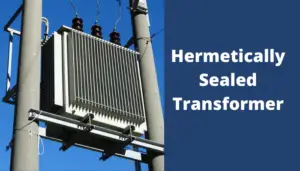Transformers are an integral part of the electrical power system, and they are responsible for voltage regulation and current transmission.
In simple terms, a transformer is a device that transfers electrical energy from one circuit to another through electromagnetic induction. However, transformers can also suffer from various issues, including underloading.
Underloading is a condition where the load on the transformer is less than its rated capacity. This can cause problems such as reduced efficiency, increased no-load losses, and decreased voltage regulation.
In this article, we will delve into what underloading of a transformer is, whether a transformer needs a minimum load, and how underloading can be harmful.
Table of Contents
What is Underloading?
Underloading occurs when the transformer’s load is less than its rated capacity. For example, a transformer with a rating of 1000 kVA but with a load of 500 kVA is underloaded. When a transformer is underloaded, the following effects can occur:
- Reduced Efficiency: The efficiency of a transformer is reduced when it operates under loaded conditions. The reason for this is that the transformer’s core and windings are not fully utilized, resulting in a higher amount of no-load losses, which causes reduced efficiency.
- Increased No-Load Losses: The no-load losses of a transformer are the sum of the core losses and the magnetizing current losses. When a transformer operates under unloaded conditions, the magnetizing current losses become higher, resulting in an increase in no-load losses.
- Decreased Voltage Regulation: Voltage regulation is a measure of a transformer’s ability to maintain its output voltage within acceptable limits. When a transformer is underloaded, its voltage regulation is decreased due to the increased magnetizing current losses, which results in a lower output voltage.
Does a Transformer Need a Minimum Load?
Most transformers have a minimum load requirement to operate correctly. The minimum load is the smallest amount of power that a transformer needs to function correctly.
Transformers with a minimum load requirement have a limit on the amount of power they can provide.
If the load on the transformer is less than the minimum load, the transformer can overheat and cause damage to its components.
The minimum load requirement of a transformer is specified by the manufacturer and is based on the transformer’s design and construction. The minimum load requirement varies among different types of transformers and can range from 25% to 50% of their rated capacity.
Transformers with a minimum load requirement can have various protection mechanisms that prevent them from operating under loaded conditions, such as a low voltage cutoff, overcurrent protection, and over-temperature protection.
How can Transformer Underloading be Harmful?
Transformer underloading can be harmful to the transformer and the electrical power system.
Underloading can cause the transformer to operate inefficiently, resulting in increased energy consumption, higher operating costs, and a reduced lifespan of the transformer. In addition, underloading can cause the following problems:
- Reduced Voltage Regulation: As mentioned earlier, underloading can cause a reduction in the transformer’s voltage regulation, resulting in a lower output voltage, which can cause problems in the electrical power system. For more information about Voltage Drop vs Voltage Regulation, Read my in-depth article here.
- Increased No-Load Losses: Underloading can cause an increase in no-load losses, which can result in an increased amount of wasted energy.
- Resonance: Underloading can cause resonance in the transformer’s windings, resulting in a vibration that can cause damage to the transformer’s components.
Conclusion
In conclusion, underloading of a transformer is a condition where the load on the transformer is less than its rated capacity.
Underloading can cause problems such as reduced efficiency, increased no-load losses, and decreased voltage regulation.
Most transformers have a minimum load requirement to operate correctly, and underloading can be harmful to the transformer and the electrical power system.
It is crucial to ensure that transformers are correctly loaded to ensure optimal performance and longevity.
Don’t Leave Empty-Handed!
Install my Free Android App on Google Play:
Electrical Cables Most Common Tables “Cables Tables”
And, my Electrical Calculations App “Fast Electrical Calculator”
Discover more great content by subscribing to My channel
Looking to stay ahead of the game in the world of electrical engineering? Subscribe to my YouTube channel and gain access to exclusive content you won’t find anywhere else!
The staff I recommend
(Amazon Affiliate Links to products I believe are high quality):
- Economy 120 Volt/60Hz AC Power Source – Step-Down Voltage & Frequency Converters 1800W
- UNI-T Digital Multimeter Tester UT139C
- 50-Amp Extension Cord for RV “100ft”
- Voltage Stabilizer 110/220v
- Hair Dryer “best selling“
- TOSHIBA EM131A5C-BS Countertop Microwave Ovens
Disclaimer: This contains affiliate links to Amazon products. I may earn a commission for purchases made through these links.

